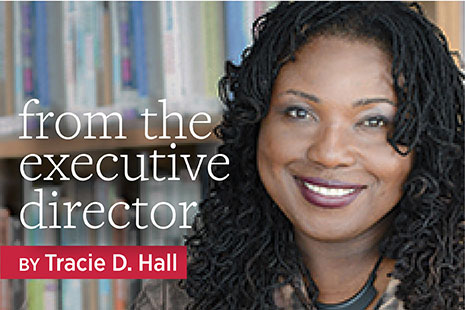
Over the past year, ALA has developed the “Pathway to Transformation,” a five-year strategic plan that launched this fall. It will culminate in 2026, the year ALA turns 150, and is shaped by the Association’s mission and its 12 core values.
Lately, however, we have faced mounting external pressures against those core ideals. To name just a few: barriers placed on equitable access, a persistent lack of diversity and equitable mobility in the US workforce, proliferating attacks against intellectual freedom with increased challenges to LGBTQIA and antiracist content, the pandemic’s disruption to education and employment, and denials of climate change that stymie conversations about our environmental crisis.
Associations have long been among the most effective catalysts, carriers, and counters of evolving social thought and political development. They serve as a “powerful instrument” when “applied to a wider range of purposes,” as French historian Alexis de Tocqueville wrote in the early 1800s in Democracy in America.
It is that potential and ability to shift public policy—and inform practice and attitudes at the service level—that make ALA so necessary. The Association continues to advance LIS and social practice in the areas of adult and family literacy, digital access, intellectual freedom, copyright, and services to people without shelter and those who are or have been incarcerated. (This fall the Association launches a comprehensive update to its standards for library services to the incarcerated and detained.)
As new generations (my own: Generation X, as well as millennials and Generation Z) rise to leadership, they place new and necessary expectations of social resonance and accountability on associations. These shifting needs should inform areas where mobilization is needed and ensure long-term relevance.
In her writings on systems change, social scientist Hildy Gottlieb asks, “What might be possible … if socially minded organizations and businesses acted more like movements than organizations?”
As she contends, “The more intentional organizations are in structuring their end goals, leadership, and means to become more movement-like, the more likely those efforts are to succeed in creating a healthier, more humane world.”
ALA is recalibrating each stream of change that Gottlieb cites: its “end goals” via the new strategic plan; “leadership” via the Transforming ALA Governance Task Force, which will conclude the restructuring work initiated by the Steering Committee on Organizational Effectiveness and Forward Together; and “means” via the first review of its operating agreement in more than two decades.
Propelling these efforts are ALA members and staff who have shown incredible ingenuity and dedication to bringing an unprecedented number of grants, services, advocacy and policy victories, and technical assistance supports to the field, as well as to underwriting membership and conference registration for those financially affected by COVID-19.
If ALA is to realize its mission “to enhance learning and ensure access to information for all,” at a time when both are so embattled, we must seek to double our ranks and to question everything—old practices, biases, silos, binaries, elephants in corners—that stands in the way of that. This is an extraordinary period, as ripe with opportunity as with challenge. When I envision ALA’s sesquicentennial, I see a diverse and expanded body of visionary leaders rising. The time is now to cultivate membership not for its own sake but for the larger work of movement building.


